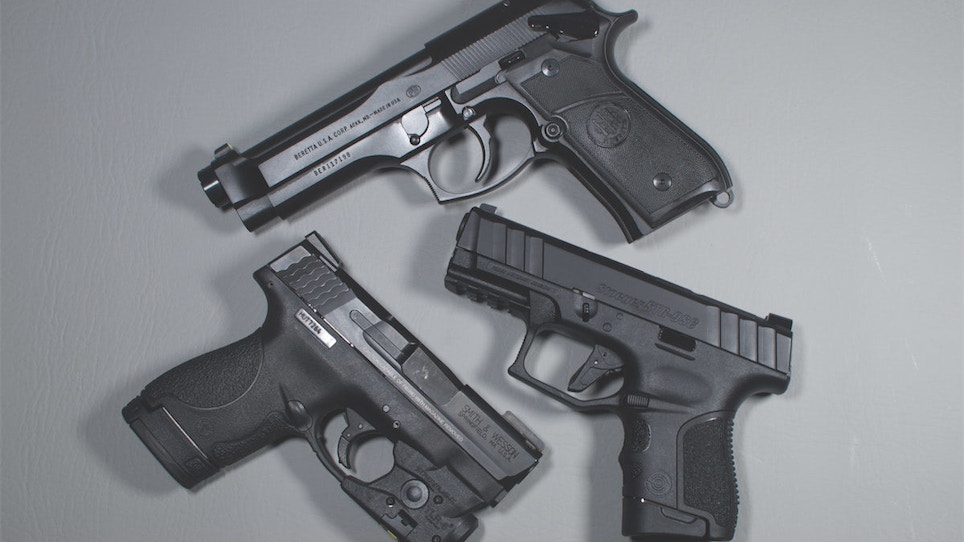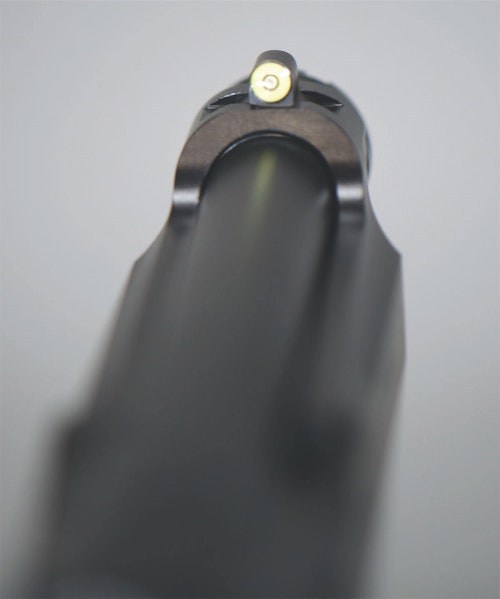The Desert Eagle is a great gun, but there’s no way it can be considered appropriate for concealed carry and self defense. So what do you do when your customer chooses the wrong gun for self defense?
Many customers will pick guns for the wrong reasons because they simply don’t know what they truly need. It boils down to the fact that they don’t understand the dynamics of a gunfight. To steer them toward what they need, you must first change their minds about what they think they know. Self-defense incidents are nasty. They are unpredictable. They rarely match up with what most people expect.
When picking a gun, your customers must have a realistic idea of what a self-defense situation typically looks like and how the weapon is likely to be used. That knowledge can then help guide your customers to the right choice because it fills the specific needs in that situation.
Anyone who has read accounts of an actual defensive-use encounter will know that the overwhelming feeling is a mixture of chaos, adrenaline and fear mixed with a heaping dose of surprise. All of these are dumped into the body simultaneously, causing the sudden shock that we call fight or flight. The body stops working on most bodily processes and focuses exclusively on the threat. Sights and sounds, sensory touch, and even time are all distorted. Any self-defense plans that you’ve made go out the window. You’re left with gross (as opposed to fine) motor skills and whatever you’ve drilled into your psyche through repetitive practice. You’ve got to paint this picture for your customer to put everything into perspective. Any obstacle that requires thought, adjustment and time must be eliminated.
Creating this mental image is essential because the gun’s features and the way it functions play a significant part in how easy or complicated the response will be. Let’s look at some of the considerations.
Reliability
A gun that doesn’t fire every time I pull the trigger is worthless to me. I can’t tell you how many times I have purchased a weapon only to lose money trading it back in after multiple malfunctions. Your customer may be budget-conscious (aren’t we all these days), but saving a few bucks is worthless if you lose your life in a gun battle. Stress just how critical this is and steer them away from anything that doesn’t have a proven track record.
Gun Fitment
I’ve written before about picking the right gun to fit the customer’s hands. It’s important anytime, but it is especially critical for self-defense shooting. A weapon that doesn’t fit the hand leads to improper grip when drawing the pistol. Accuracy and time will be affected as they adjust their grip before engaging the target.
Concealment
Here’s another instance when perspective makes a difference. Have your customer imagine being the bad guy wanting to rob a store. He enters and spots three customers. One of them is wearing a Second Amendment shirt with a slight bulge on the right hip. This customer will be the first and probably only victim before the robbery because he poses the most daunting obstacle to the robber’s goal. If you can’t conceal it properly, the gun may be worthless. Worst, it could be like painting a target on the back of your shirt.
Part of concealment is holster availability. The more popular the gun, the more holsters will be available, thus expanding concealment options. For example, Glock and Smith & Wesson models are so popular that you can buy holsters almost anywhere. Less popular guns equal hard-to-find holsters or a custom holster.
Sights
Adjustable sights are great if you’re shooting in competition, but they will reduce your effectiveness in a gunfight. The fact is that most people resort to point-shooting under severe stress. That’s not a guess. It is a fact obtained by talking to real people that have been there. Does that mean that sights are unimportant? Absolutely not.
Point-shooting is not the opposite of aimed fire. It is merely a modification of it. It’s a coarser version of the fine motor skill we have all been taught. Some people call it indexed shooting, indicating that your sights are roughly aligned using peripheral vision rather than actual aimed sighting. The shooter can just observe the orientation of the gun to the target. If they want to be more precise, they might pick out the front sight and align that with the target. But one fact is clear: They will likely not take the time to center the front sight in the rear with equal spacing on both sides and make sure they’re level across the top.
Knowing this, your customers will be more interested in guns with high visibility front sights. There are lots of versions out there. A great example would be XS Sights’ big-dot system. If the sight is in your field of vision, it will immediately register without thinking about it. With a proper grip and the front sight on the target, you can be reasonably confident that you will get a hit. All of this assumes average self-defense distances of 3 to 15 feet.
External Safeties
Just like the discussion on sights, actual shooting incidents have shown that anything that has to be manipulated before firing will likely be a hindrance. Thus, there is a good argument for the current flood of striker-fired pistols entering the market. Glock started it, and since then everyone has jumped on board. The result is a vast selection of great personal-defense handguns. These typically don’t have external safeties, so there’s nothing to manipulate. Most of the safeties are internal components that are deactivated by an intentional trigger press.
When the situation is critical, your customer’s only concern will be to engage the target accurately. Milliseconds count here more than in any shooting competition. Multiple police officers have been killed because they didn’t disengage the safety before pulling the trigger. It seems silly until you find yourself in that situation and your ability to think goes out the window.
Good Advice
It’s unreasonable to think your customers have read the essential works by Jeff Cooper, Col Dave Grossman, Loren Christensen and others. They’ve never had to consider fighting in low-light conditions and how the eye responds, and it’s doubtful that they know about the body’s reactions to stress and deadly encounters with a bad guys. Most are familiar with unrealistic scenes from decades of action movies where the good guy always has the coolest equipment and always wins the fight. Your job is to put everything in perspective with sound advice based on facts and real-life examples.
Only mental training and constant practice will determine how someone responds to critical incidents, but giving good advice when selecting a gun can at least provide the best possible platform when confronting a bad guy. First, get them the right equipment, then refer them to good trainers for practical lessons in survival. They will thank you with return visits looking for lights, lasers, different holsters and other accessories as they gain more knowledge and skill.








